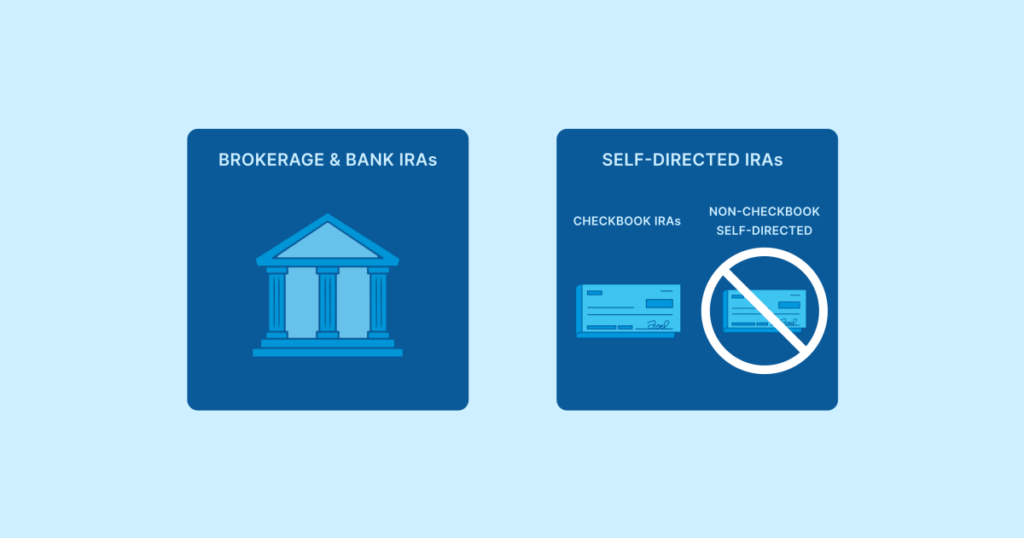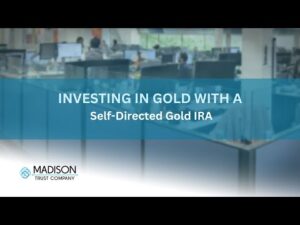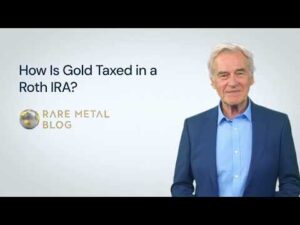
When it comes to retirement savings, many individuals opt for traditional investment vehicles like Roth IRAs. However, the spotlight recently shone on tech investor Peter Thiel and his $5 billion tax-free Roth IRA, raising eyebrows and questions about alternative investments. Thiel's use of a self-directed IRA to invest in early-stage tech companies multiple times over highlighted the potential loopholes in IRA structures. Let's delve into the six common pitfalls associated with self-directed and checkbook IRAs, particularly in the context of bitcoin, and explore the looming prospects of increased regulatory scrutiny.
The Distinction Between IRA Structures
Before delving into the risks, it's crucial to differentiate between the various IRA structures available to investors. Traditional (pre-tax) and Roth (post-tax) IRAs are the two main types, irrespective of the custodial relationship or structure. All IRAs are custodial, meaning they are overseen and managed by licensed financial institutions. Brokerage and bank IRAs, such as those offered by Fidelity or TD Ameritrade, are the most common types, allowing investments in stocks, bonds, and other securities, as well as banking products. On the other hand, self-directed IRAs (SDIRAs) provide expanded investment options beyond traditional assets, including real estate, private loans, and digital assets like bitcoin. Checkbook IRAs, a subset of SDIRAs, grant account owners direct control over investments through a checking account, albeit with added administrative responsibilities and potential tax implications.
Identifying Risks in Self-Directed and Checkbook IRAs
1. **Liquidity**: Self-directed assets often lack liquidity, posing challenges in selling them quickly when needed for distributions or expenses, potentially leading to inadvertent fund mixing.
2. **Formation and Legal Structure**: Establishing a checkbook IRA requires careful structuring to maintain tax-advantaged status, with errors risking disqualification of the entire IRA.
3. **Misreporting Transactions**: Owners of checkbook IRAs must accurately report transactions to avoid legal complications and ensure compliance with IRS rules.
4. **"Deemed Distribution" Treatment**: Certain investments within checkbook IRAs could trigger taxable distributions, as illustrated by the McNulty v. Commissioner case, highlighting the risks of unsupervised transactions.

5. **Prohibited Transactions**: Self-directed IRA owners must avoid commingling personal and IRA assets to prevent penalties and tax liabilities, with strict rules governing transactions involving alternative assets like digital currencies.
6. **Financing Challenges**: Financing property purchases or active businesses within a self-directed IRA requires adherence to specific guidelines to prevent tax implications and maintain the IRA's integrity.
Implications for Bitcoin IRAs
Given the increasing scrutiny on self-directed and checkbook IRAs, particularly in light of regulatory interest in digital assets, investors in bitcoin IRAs must navigate these risks effectively. Platforms like Unchained IRA offer a non-checkbook structure that enhances compliance and reduces the likelihood of pitfalls associated with self-directed IRAs. By prioritizing proper IRA structuring and compliance, investors can safeguard their bitcoin holdings within an IRA framework.
It's essential to seek professional advice regarding tax implications and IRA structures, as the landscape continues to evolve. Ultimately, a well-managed bitcoin IRA can offer long-term benefits while avoiding potential pitfalls associated with self-directed investments.
Frequently Asked Questions
What does gold do as an investment?
Gold's price fluctuates depending on the supply and demand. Interest rates can also affect the gold price.
Due to the limited supply of gold, prices for gold are highly volatile. In addition, there is a risk associated with owning physical gold because you have to store it somewhere.
How does a Gold IRA account work?
The Gold Ira Accounts are tax-free investment options for those who want to make investments in precious metals.
You can purchase physical gold bullion coins anytime. You don't have a retirement date to invest in gold.
You can keep gold in an IRA forever. When you die, your gold assets won't be subjected to taxes.
Your gold will be passed on to your heirs, without you having to pay capital gains taxes. Because your gold doesn't belong to the estate, it's not necessary to include it on your final estate plan.
To open a IRA for gold, you must first create an individual retirement plan (IRA). Once you've done that, you'll receive an IRA custody. This company acts like a middleman between the IRS and you.
Your gold IRA custody will take care of the paperwork and send the forms to IRS. This includes filing annual reporting.
After you have established your gold IRA you will be able purchase gold bullion coin. Minimum deposit required is $1,000 A higher interest rate will be offered if you invest more.
You will pay taxes when you withdraw your gold from your IRA. You will be liable for income taxes and penalties if you take the entire amount.
However, if you only take out a small percentage, you may not have to pay taxes. There are exceptions. However, there are exceptions. If you take 30% or more of your total IRA asset, you'll owe federal Income Taxes plus a 20% penalty.
It's best not to take out more 50% of your total IRA investments each year. Otherwise, you'll face steep financial consequences.
Can I buy or sell gold from my self-directed IRA
However, gold can only be purchased with your self-directed IRA. To do so, you must first open a brokerage account at TD Ameritrade. If you have an existing retirement account, you can transfer funds to another one.
The IRS allows individuals contributing up to $5.500 each ($6,500 if married, filing jointly) into a traditional IRA. Individuals can contribute up $1,000 per annum ($2,000 if they are married and jointly) directly to a Roth IRA.
If you do decide you want to invest your money in gold, you should look into purchasing physical bullion instead of futures contracts. Futures contracts can be described as financial instruments that are determined by the gold price. These financial instruments allow you to speculate about future prices without actually owning the metal. But, physical bullion is real bars of gold or silver that you can hold in one's hand.
How much gold do you need in your portfolio?
The amount of capital required will affect the amount you make. A small investment of $5k-10k would be a great option if you are looking to start small. As you grow, you can move into an office and rent out desks. This way, you don't have to worry about paying rent all at once. It's only one monthly payment.
It's also important to determine what type business you'll run. My website design company charges clients $1000-2000 per month depending on the order. If you are doing this type of thing, it is important to think about how much you can expect from each client.
As freelance work requires you to be paid freelancers, your monthly salary won't be as high as mine. So you might only get paid once every 6 months or so.
You need to determine what kind or income you want before you decide how much of it you will need.
I would recommend that you start with $1k-2k worth of gold and then increase your wealth.
How to Open a Precious Metal IRA
First, decide if an Individual Retirement Account is right for you. To open the account, complete Form 8606. You will then need to complete Form 5204 in order to determine which type IRA you are eligible. This form must be submitted within 60 days of the account opening. Once this has been completed, you can begin investing. You could also opt to make a contribution directly from your paycheck by using payroll deduction.
For a Roth IRA you will need to complete Form 8903. Otherwise, the process is identical to an ordinary IRA.
You'll need to meet specific requirements to qualify for a precious metals IRA. The IRS stipulates that you must have earned income and be at least 18-years old. You can't earn more than $110,000 per annum ($220,000 in married filing jointly) for any given tax year. You must also contribute regularly. These rules apply to contributions made directly or through employer sponsorship.
A precious metals IRA can be used to invest in palladium or platinum, gold, silver, palladium or rhodium. You can only purchase bullion in physical form. This means you can't trade shares of stock and bonds.
You can also use your precious metallics IRA to invest in companies that deal with precious metals. This option may be offered by some IRA providers.
However, investing in precious metals via an IRA has two serious drawbacks. First, they don't have the same liquidity as stocks or bonds. It's also more difficult to sell them when they are needed. Second, they don't generate dividends like stocks and bonds. You'll lose your money over time, rather than making it.
What tax is gold subject in an IRA
The fair market value at the time of sale is what determines how much tax you pay on gold sales. You don't have tax to pay when you buy or sell gold. It is not considered income. If you sell it after the purchase, you will get a tax-deductible gain if you increase the price.
You can use gold as collateral to secure loans. Lenders will seek the highest return on your assets when you borrow against them. This often means selling gold. There's no guarantee that the lender will do this. They may keep it. They might decide that they want to resell it. Either way you will lose potential profit.
To avoid losing money, only lend against gold if you intend to use it for collateral. Otherwise, it's better to leave it alone.
Statistics
- If you take distributions before hitting 59.5, you'll owe a 10% penalty on the amount withdrawn. (lendedu.com)
- The price of gold jumped 131 percent from late 2007 to September 2011, when it hit a high of $1,921 an ounce, according to the World Gold Council. (aarp.org)
- Contribution limits$6,000 (49 and under) $7,000 (50 and up)$6,000 (49 and under) $7,000 (50 and up)$58,000 or 25% of your annual compensation (whichever is smaller) (lendedu.com)
- Instead, the economy improved, stocks rebounded, and gold plunged, losing 28 percent of its value in 2013. (aarp.org)
- (Basically, if your GDP grows by 2%, you need miners to dig 2% more gold out of the ground every year to keep prices steady.) (smartasset.com)
External Links
bbb.org
investopedia.com
- Are You a Good Candidate for a Gold IRA
- What are the Options Types, Spreads and Example. Risk Metrics
irs.gov
wsj.com
- Saddam Hussein's InvasionHelped Uncage a Bear In 90 – WSJ
- Want to Keep Gold in Your IRA at Home? It's not legal – WSJ
How To
A rising trend in gold IRAs
The gold IRA trend is growing as investors seek ways to diversify their portfolios while protecting against inflation and other risks.
Gold IRA owners can now invest in physical gold bullion or bars. It is tax-free and can be used by investors who aren't concerned about stocks and bond.
Investors can have confidence in their investments and avoid market volatility with a gold IRA. They can use the gold IRA to protect themselves against inflation and other potential problems.
Investors also get the unique benefits of owning physical Gold, including its durability, portability, flexibility, and divisibility.
The gold IRA also offers many other benefits, such as the ability to quickly transfer the ownership of the gold to heirs, and the fact the IRS doesn't consider gold a currency.
This means that investors who are looking for financial safety and security are becoming more interested in the gold IRA.
—————————————————————————————————————————————————————————————-
By: Jessy Gilger
Title: Understanding the Risks of Self-Directed and Checkbook Bitcoin IRAs
Sourced From: bitcoinmagazine.com/business/6-common-pitfalls-of-self-directed-and-checkbook-bitcoin-iras
Published Date: Fri, 12 Apr 2024 16:48:41 GMT

















